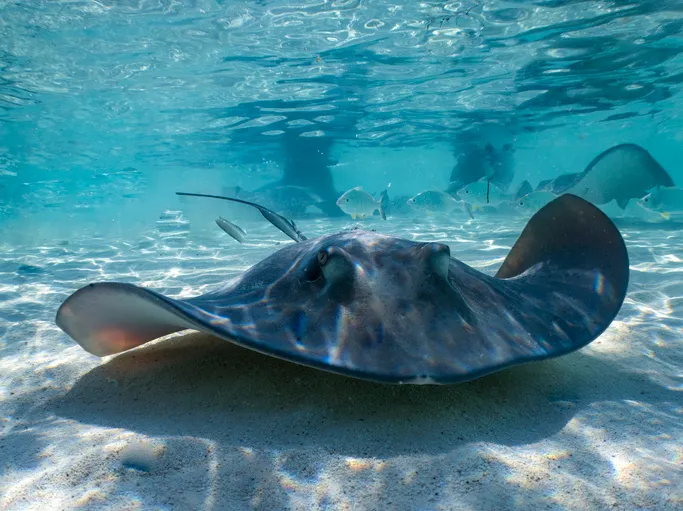(Photo courtesy of: KELOLAND.com) “Charlotte the sting ray.”
Suhani Karki
Connector Contributor
In a North Carolina aquarium, a round stingray is opening dialogues around reproduction after she seemingly became pregnant from a white-spotted bamboo shark. This stingray named Charlotte will be giving birth to four pups, without ever having been in the presence of another male mate within the past eight years.
Charlotte the Stingray was confirmed as pregnant when an ultrasound was conducted to examine growths found in her body, which were later identified as eggs. Charlotte had not been in the presence of any stingray males for eight years, however she had been in a tank with male sharks. After noticing a shark bite mark on Charlotte, that is common in shark mating, researchers were perplexed as to how her pregnancy would be possible because they were two different species.
This pregnancy has contributed to widespread fascination and curiosity with the intricacies and apparent phenomena in reproduction for various species. Whether individuals are members of the same species or not reflects their capability to produce fertile offspring. Although bite marks from a shark were apparent on Charlotte, this mating from two drastically different species resulting in the fertile offspring is extremely unlikely. When differentiating species, there are two main forms of reproductive isolation that come into play: prezygotic factors (before fertilization) and postzygotic factors (after fertilization). Prezygotic factors consist of behavioral (courtship rituals) and physical attributes (anatomical structure) making the stingray and shark incompatible with each other for fertilization. Whereas postzygotic factors consist of a genetic incompatibility between the shark and stingray DNA resulting in failure to develop a fertile individual.
Instead, this pregnancy was caused by Charlotte herself, called parthenogenesis. Parthenogenesis, a term from Greek “Parthenos”, meaning “virgin” and “genesis”, is a form of asexual reproduction in which the development of an embryo occurs without the need for male sperm fertilization. A smaller “polar body” cell with DNA close to the mother forms during the same time of the egg and combines to create offspring that are not replicates (clones) of the mother but similar. Without needing to exert time and effort to find a suitable mate, organisms can reproduce by themselves, and instead find time to gather other resources to sustain their lives. Typical animals that procreate through these reproductive means are small invertebrates. Species of sharks and stingrays are also capable of these means of reproduction, although why these are common across some species of animals and not others is not certain.
Charlotte is the first round-stingray to be speculated to have reproduced by parthenogenesis (from human documentation) and is expected to give birth at any moment. With many eyes on the rare birth of her pups, this international attention is a learning experience into the many intricacies of biology that we have yet to uncover.


